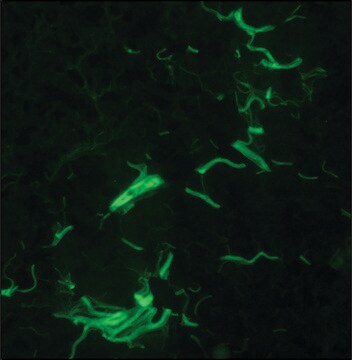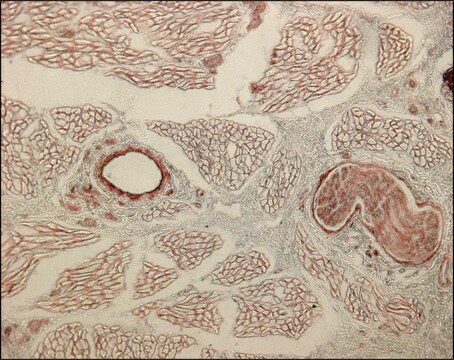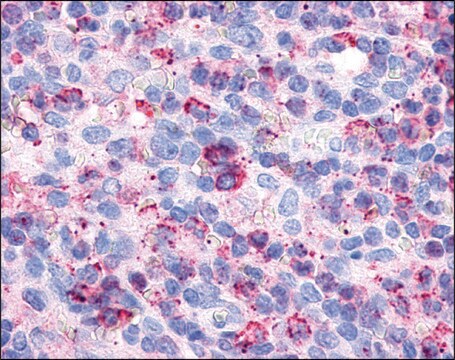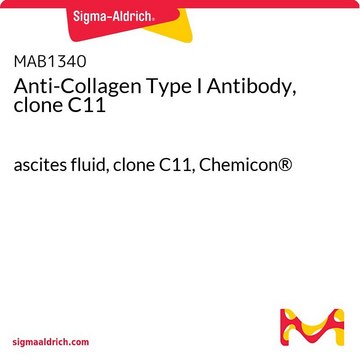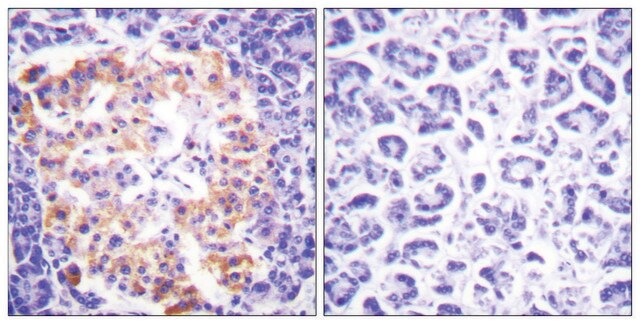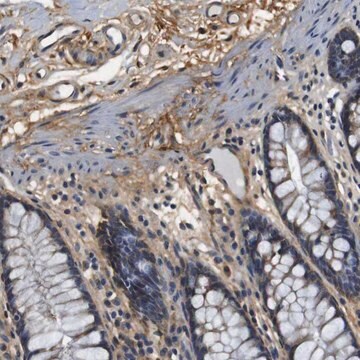C2456
Monoclonal Anti-Collagen, Type I antibody produced in mouse
clone COL-1, ascites fluid
Synonim(y):
Collagen Type 1 Antibody, Collagen Type 1 Antibody - Monoclonal Anti-Collagen, Type I antibody produced in mouse, Collagen Type I Antibody, Type 1 Collagen Antibody
About This Item
Polecane produkty
pochodzenie biologiczne
mouse
Poziom jakości
białko sprzężone
unconjugated
forma przeciwciała
ascites fluid
rodzaj przeciwciała
primary antibodies
klon
COL-1, monoclonal
zawiera
15 mM sodium azide
reaktywność gatunkowa
bovine, human, pig, rat, rabbit, deer
metody
dot blot: suitable
immunohistochemistry (frozen sections): 1:2000 using human or other mammalian frozen sections
indirect ELISA: suitable
izotyp
IgG1
numer dostępu UniProt
Warunki transportu
dry ice
temp. przechowywania
−20°C
docelowa modyfikacja potranslacyjna
unmodified
informacje o genach
rat ... Col1a1(29393)
Opis ogólny
Specyficzność
Immunogen
Zastosowanie
- immunohistochemistry
- dot blot technique
- indirect immunofluorescence staining
Działania biochem./fizjol.
Postać fizyczna
Przechowywanie i stabilność
Oświadczenie o zrzeczeniu się odpowiedzialności
Nie możesz znaleźć właściwego produktu?
Wypróbuj nasz Narzędzie selektora produktów.
Kod klasy składowania
12 - Non Combustible Liquids
Klasa zagrożenia wodnego (WGK)
nwg
Temperatura zapłonu (°F)
Not applicable
Temperatura zapłonu (°C)
Not applicable
Certyfikaty analizy (CoA)
Poszukaj Certyfikaty analizy (CoA), wpisując numer partii/serii produktów. Numery serii i partii można znaleźć na etykiecie produktu po słowach „seria” lub „partia”.
Masz już ten produkt?
Dokumenty związane z niedawno zakupionymi produktami zostały zamieszczone w Bibliotece dokumentów.
Klienci oglądali również te produkty
Nasz zespół naukowców ma doświadczenie we wszystkich obszarach badań, w tym w naukach przyrodniczych, materiałoznawstwie, syntezie chemicznej, chromatografii, analityce i wielu innych dziedzinach.
Skontaktuj się z zespołem ds. pomocy technicznej
